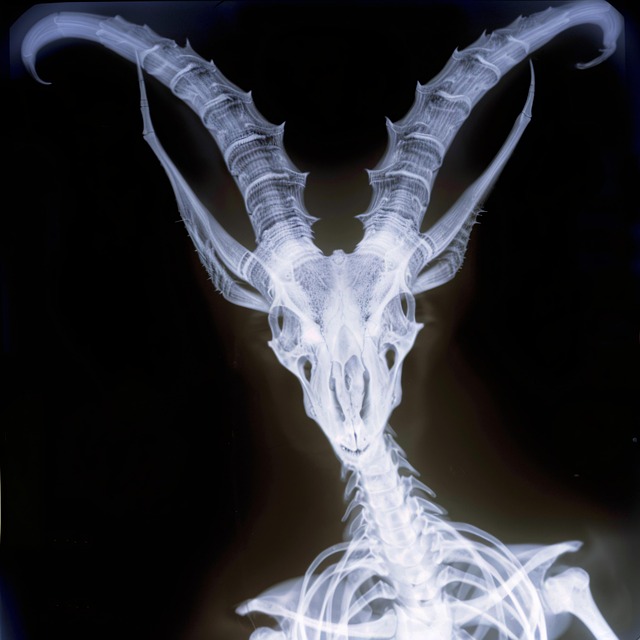An Intravenous Pyelogram (IVP) uses radiographic contrast media to vividly visualize the urinary tract, aiding in diagnosing stones, infections, and structural anomalies. This enhances organ and blood vessel visibility, allowing radiologists to accurately assess anatomy and issues like blockages or tumors. Contrast media improves diagnostic sensitivity, reduces invasive follow-ups, and facilitates better treatment planning by revealing subtle abnormalities and blood flow patterns.
In the field of medical imaging, Intravenous Pyelogram (IVP) plays a vital role in diagnosing urinary tract conditions. However, enhancing the visibility and accuracy of these images can be challenging. This article explores how the strategic use of radiographic contrast media significantly improves IVP results. By understanding the principles behind contrast agents, we’ll delve into their role in enhancing urinary tract visibility, boosting diagnostic accuracy, and optimizing the IVP procedure itself.
Understanding IVP and Radiographic Contrast Media
An Intravenous Pyelogram (IVP) is a diagnostic imaging procedure that involves injecting a radioactive dye into a patient’s vein to visualize the urinary tract. This test is crucial for detecting any abnormalities or blockages within the kidneys, ureters, bladder, and urethra. IVPs provide detailed images of these structures, aiding healthcare professionals in diagnosing conditions like kidney stones, infections, or structural anomalies.
Radiographic contrast media plays a pivotal role in enhancing the visibility of internal organs and blood vessels during an IVP. These media are substances with high X-ray opacity, designed to create distinct contrasts between various anatomical structures. When injected intravenously, they highlight specific areas of interest, allowing radiologists to better assess the urinary tract’s anatomy and detect any irregularities or potential issues. Understanding how these contrast media interact with body tissues is essential for interpreting IVP results accurately and ensuring optimal diagnosis.
Enhancing Urinary Tract Visibility
One of the key aspects in improving urinary tract imaging through Intravenous Pyelogram (IVP) is enhancing the visibility of the tract using radiographic contrast media. These agents, when administered intravenously, create a distinct visual difference between the urine and surrounding tissues on X-ray images. This contrast allows radiologists to better identify and trace the course of the urinary tract, from the kidneys down to the bladder.
The strategic use of radiographic contrast media in IVP can highlight structural abnormalities, such as blockages or strictures, more clearly. It enables a more accurate diagnosis of conditions like urinary stones, tumors, or infections by providing detailed information on the flow and distribution of urine within the tract. As a result, enhancing urinary tract visibility through contrast media is a game-changer in ensuring precise and timely medical interventions.
Improved Diagnostic Accuracy
In an IVP (Intravenous Pyelogram), the use of radiographic contrast media plays a pivotal role in enhancing diagnostic accuracy. By introducing substances like iohexol or iopromide into the bloodstream, healthcare professionals can vividly visualize the urinary tract, revealing structural details that might otherwise remain obscured. This clarity is paramount in detecting anomalies such as kidney stones, strictures, or tumors, thereby enabling timely and precise diagnosis.
The application of contrast media improves IVP imaging by highlighting the normal anatomy and pathologies alike. It allows radiologists to differentiate between various tissues and fluids, making it easier to identify abnormalities within the kidneys, ureters, and bladder. This enhanced visibility not only improves diagnostic sensitivity but also reduces the need for invasive follow-up procedures, ultimately streamlining patient care.
Optimizing IVP Procedure with Contrast Agents
Optimizing IVP procedures with radiographic contrast media plays a pivotal role in enhancing the quality and diagnostic accuracy of urinary tract imaging. Contrast agents, such as iohexol or iopromide, are crucial tools for highlighting structural details within the kidneys, ureters, and bladder. By improving visibility, these agents enable radiologists to detect subtle abnormalities, such as small stones, strictures, or masses, that might be obscured in regular X-ray imaging.
The strategic use of contrast media also facilitates better assessment of blood flow patterns, which is vital for diagnosing conditions like renal insufficiency or urinary tract infections. By increasing the radiopacity of blood vessels, contrast agents allow for clearer visualization of their anatomy and function, ultimately leading to more precise diagnoses and effective treatment planning.
In conclusion, the strategic utilization of radiographic contrast media in IVP (Intravenous Pyelogram) significantly enhances urinary tract visibility, leading to improved diagnostic accuracy. By optimizing the IVP procedure with these advanced agents, healthcare professionals can more effectively detect and diagnose various conditions affecting the urinary system. This article has highlighted the key benefits of contrast agents in IVP, underscoring their role as a valuable tool in modern medical imaging.
